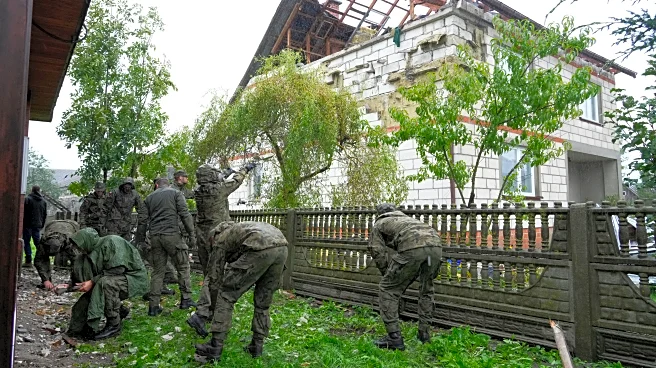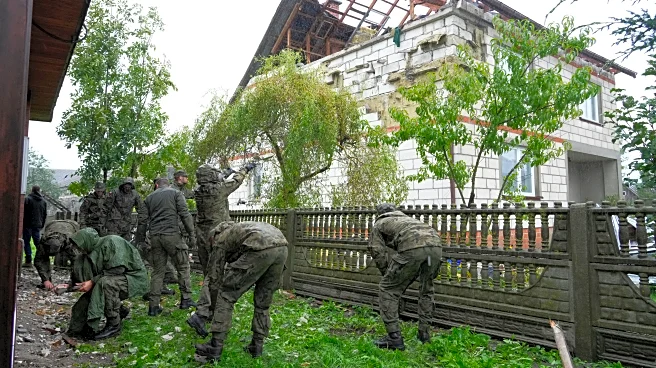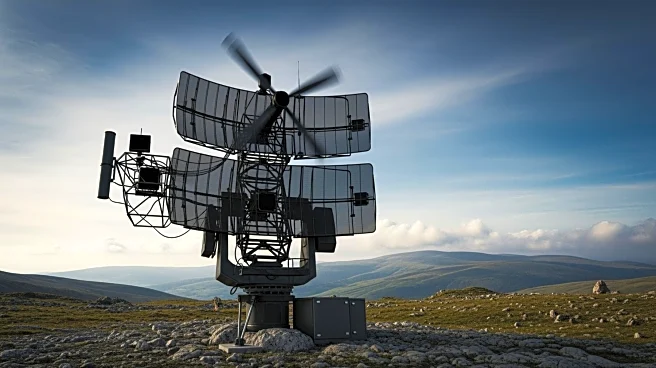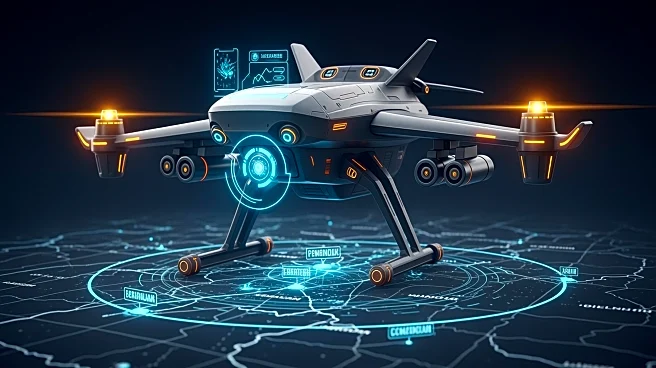What's Happening?
Poland and Romania have begun deploying the American Merops system to counter Russian drone incursions into NATO airspace. This move follows recent incidents where Russian drones violated Polish airspace,
prompting NATO to enhance its defenses on the eastern flank. The Merops system, which utilizes artificial intelligence to identify and target drones, is designed to operate even when satellite and electronic communications are jammed. The system is compact enough to fit in a midsize pickup truck and is also being adopted by Denmark. The deployment aims to deter Russian forces from crossing NATO borders, stretching from Norway to Turkey. The urgency for such technology arose after multiple drone incursions, including incidents in Romania and temporary airport closures in major European cities.
Why It's Important?
The deployment of the Merops system is crucial for strengthening NATO's eastern defenses against the evolving threat of drone warfare. As drones become a more prevalent tool in modern conflicts, NATO's ability to detect and neutralize them at a lower cost than traditional methods is vital. This development highlights the need for advanced technological solutions to offset Russia's manpower advantage along its borders. The Merops system represents a strategic shift towards using technology to maintain security and stability in Europe, potentially reducing the financial burden of responding to drone threats with expensive military assets.
What's Next?
NATO plans to continue deploying the Merops system along its eastern borders, with Denmark also acquiring the technology. European companies are developing additional technologies, including anti-drone missiles, to create a comprehensive 'drone wall' on the EU's eastern border. U.S. military leaders advocate for an Eastern Flank Deterrence Line, a layered defense system integrating various technologies. This initiative aims to create a network of sensors and command systems adaptable to evolving threats. The process of building these defenses is expected to take two to five years, as NATO seeks to counter Russia's advancements in drone technology.
Beyond the Headlines
The deployment of the Merops system underscores the rapid evolution of drone warfare and its implications for global security. As drones become more sophisticated, the ethical and legal dimensions of their use in conflict zones are increasingly significant. The ability to deploy drones against drones raises questions about the future of warfare and the balance between technological innovation and human oversight. This development may also influence international policies on drone usage and defense strategies, as nations grapple with the challenges posed by autonomous systems in military operations.













